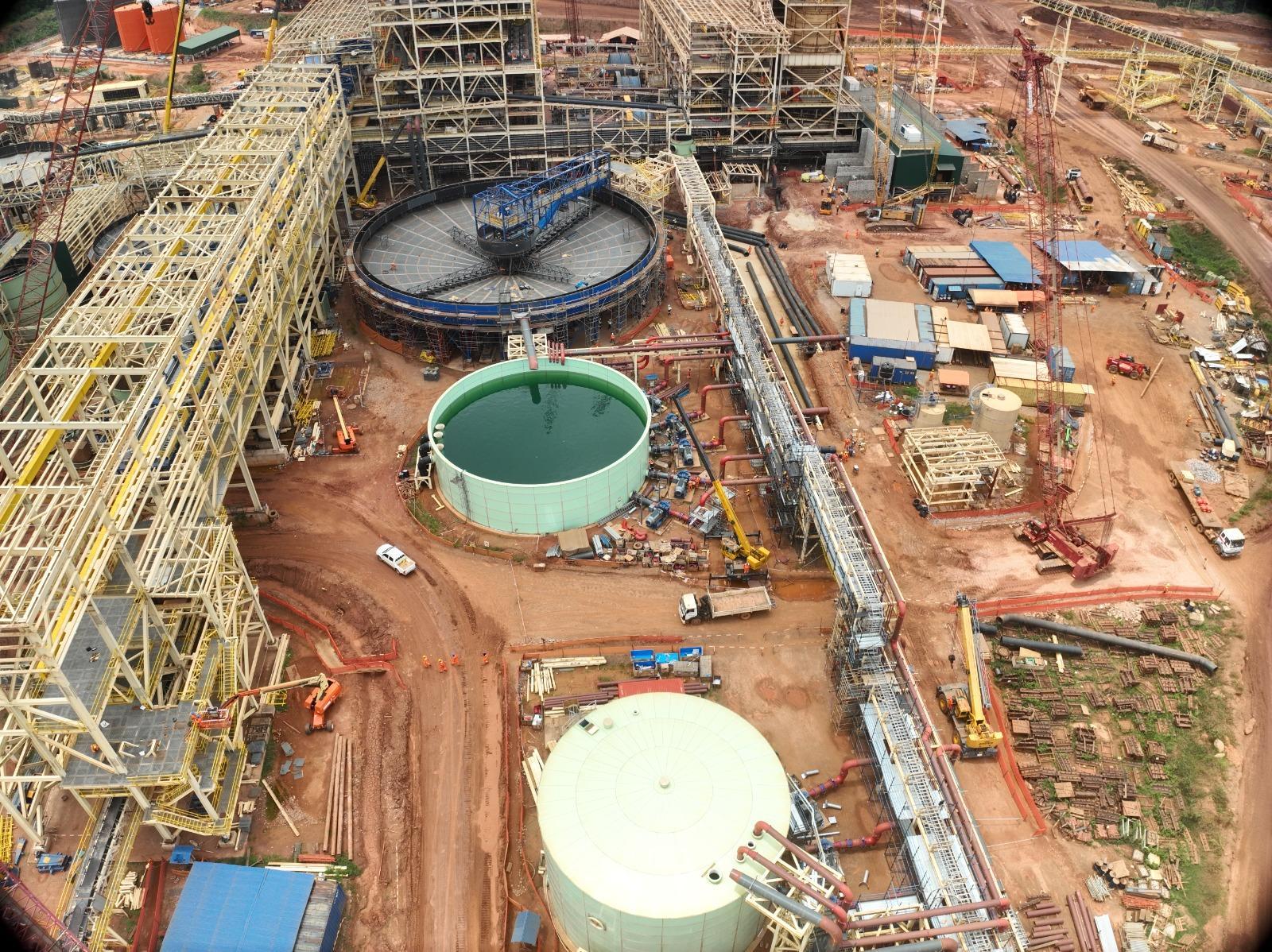Africa-Press – Liberia.
A detailed environmental assessment and two official permits issued by Liberia’s Environmental Protection Agency (EPA) have debunked recent claims by Senator Nya Twayen that ArcelorMittal Liberia (AML) built its new iron ore concentrator in Toledeh, Nimba County, without a proper environmental impact study.
Last week Senator Nya Twayen complained ArcelorMittal Liberia to the Senate enabling the senate Plenary to mandate its Secretary of Senate, J. Nanborlor F. Singbeh, Sr. to communicate with the Environmental Protection Agency (EPA) “to submit copies of the Environmental Impact Assessment (FIA) study, report, and the corresponding environmental permit issued in relation to the ongoing construction of a multi-million-dollar iron ore processing plant by ArcelorMittal in Yekepa, Nimba County”.
For weeks now, Senator Twayen has harbored the belief that there was no environmental and safety impact assessment was done prior to the construction of the concentrator.
Contrary to the Senator’s assertions, AML conducted and submitted a full Environmental and Social Impact Assessment (ESIA) for the Tokadeh Iron Ore Processing Plant, as required by law. The study was prepared by URS/AMEC Foster Wheeler, an internationally recognized environmental consultancy, in partnership with Earthtime Inc., and was formally submitted to the EPA.
Documents seen also revealed 21 separate reports environmental and social impact assessment reports that covered the concentrator, including a Framework Resettlement action plan, environmental management plan, Noise pollution, Geo mapping, climate change studies, Zoogical impact report.
Botanic Grassland report, Forest Botanical Impact report, landscape Character report and even assessments reports submitted by conservation internation that enabled the EPA to renew two environmental permits for the construction and procession of ore from Tokadeh and operations at the Port of Buchanan
The ESIA report specifically states:
“This ESIA has been conducted in accordance with the requirements of the Environmental Protection and Management Law (EPML) of Liberia and EPA guidelines for Category A projects.”
The study classified the concentrator project as a Category A development, meaning it had potentially high environmental and social risks and therefore required full environmental review, public consultation, and official approval prior to implementation.
What the ESIA Covered
The ESIA provided an in-depth review of environmental baselines including air quality, surface and groundwater conditions, biodiversity, noise, and soil in the Tokadeh and Yekepa areas. It also examined social factors such as population density, health indicators, livelihoods, and cultural heritage. The report noted:
“Potential impacts of the project include dust emissions, noise from machinery, sediment runoff into local watercourses, and biodiversity disturbance. Mitigation measures include dust suppression systems, buffer zones, controlled clearing of vegetation, and the implementation of a community health and safety plan.”
Summary of Project Outline from ESIA Report (Phase II Expansion – ArcelorMittal Liberia)
According to the ESIA report, the concentrator mining project involves extracting, crushing, screening, and magnetically/flotation-concentrating approximately 15 million tonnes of iron ore annually over 20 years (2015–2034). Mining will occur at Yuelliton (up to 200m deep), Gangra (175m), and Tokadeh (100m), covering a total mining area of about 1,200 hectares, including stockpiles and waste dumps.
“A 303-hectare Tailings Management Facility will be constructed at Tokadeh, and treatment ponds will cover another 146 hectares. The total mine exclusion zone, inaccessible to the public for the life of the mine, spans 2,146 hectares, the ESIA report stated.
“Ore will be concentrated at Tokadeh and transported by rail. There will be new township developments in Yekepa and Buchanan, including housing, sewage, and waste management systems. A temporary camp for up to 1,250 construction workers and a railway maintenance camp at Greenhill in Bong County will support operations”.
This Environmental and Social Impact Assessment (ESIA) draws from prior studies (2010, 2011) and includes updated physical, biological, and social surveys to reflect Phase II expansion needs of which the concentrator is a part of. Some aspects, like drainage management, borrow pit locations, and Yekepa township planning, remain at early design stages and will be further assessed as details become available.
Importantly, the ESIA emphasized that no involuntary resettlement was necessary, as the project falls entirely within AML’s previously authorized mining concession. It further documented that extensive public consultations were held across Nimba County involving local leadership, women’s groups, youth, and local government, as part of the approval process.
EPA Permit Confirms Project Legitimacy
The EPA issued a renewed environmental permit on August 10, 2024, signed by Dr. Emmanuel K. Urey Yarkpawolo, Executive Director of the EPA. The permit reference number is EPA/EC/ESIA/EMPS/004-0113R and covers the processing (concentration) ore extraction at Tokadeh, operation of the concentrator in Yekepa, and associated stockpiling and processing activities at the Port of Buchanan.
The permit is explicit:
“This permit is issued pursuant to the Environmental Protection and Management Law of Liberia (2003), Part III, Sections 8 (1), 11 (1), and 13. It authorizes ArcelorMittal Liberia Limited to conduct the Phase II iron ore mining and processing activities within the coordinates specified herein.”
It also warns:
“Any deviation from the approved Environmental and Social Management Plan (ESMP), including misinformation or failure to comply with monitoring obligations, shall be subject to suspension, cancellation, or prosecution.”
The permit remains in effect until 20 December 2027, covering AML’s current operations and establishing a clear regulatory framework for environmental oversight. It mandates the submission of periodic environmental audit reports, monitoring dust and water quality, noise control, biodiversity protection, and sustained community engagement.
Conclusion: Senator’s Claim Refuted by Facts
The facts are clear.
A full ESIA was conducted, reviewed, and approved. The EPA granted AML a valid environmental permit grounded in Liberian law. Construction of the concentrator was not only legal but also subject to some of the highest environmental standards applied in Liberia’s mining sector to date.
Senator Twayen’s claims that “there was no environmental report before the concentrator was built” is directly contradicted by documentary evidence. The public should be guided by verified records, not political statements that risk undermining national regulatory systems and discouraging responsible investment.
For More News And Analysis About Liberia Follow Africa-Press






